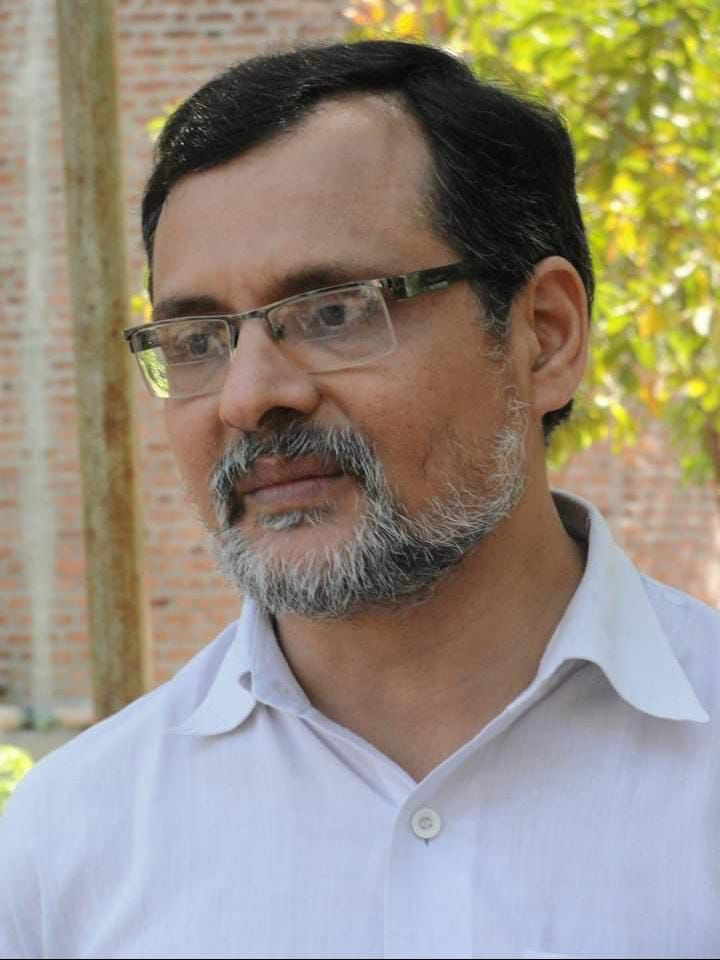Global Talent and Labour Markets: Navigating Opportunities and Challenges in an Interconnected World
- In Economics
- 11:18 AM, Jul 11, 2025
- Viren S Doshi
Coupling Free Trade Agreements with Free Migration Agreements
Introduction
Global talent and labour markets are pivotal to economic growth, innovation and trade in an interconnected world. As technology reshapes industries and demographic shifts redefine workforce dynamics, nations compete to attract skilled talent while ensuring ethical labour practices.
Wage disparities across countries significantly influence the production and trade of goods and services, creating both opportunities and challenges.
This article explores global talent and labour markets, country-specific trends, efforts to prevent exploitation of talent and labour, the dynamics of opaque and open markets, cross-country migration, the US talent pool with concerns about intellectual property (IP) theft by Chinese Communist Party (CCP)-occupied China and India’s role as a human resource hub for talent and labour with human values.
Country-Wise Status with respect to Global Norms
Talent and labour markets across the globe vary due to political-economic-education systems and migration policies, as well as demographic and natural resources of the nations.
The Organisation for Economic Co-operation and Development (OECD)’s Talent Attractiveness Index ranks New Zealand, Sweden, Switzerland, Australia and Norway as top destinations for skilled migrants, citing flexible visa policies and inclusive environments.
The United States, despite its economic dominance based on a legacy of pooling talent from across the globe over centuries, is now in a controlling phase with a restrictive H-1B visa quota, although it is in need of talent and is also well-positioned to absorb more. The Trump Administration is poised to do a complete overhauling of this skewed lottery-type visa system, and this would be likely more appropriate for pooling talent, particularly from countries like India and Israel.
India is projected to have a surplus of over 1 million high-skilled English language proficient, STEM (science, technology, engineering and mathematics) stream and other tech workers by 2030, positioning it as a global human resource leader.
In contrast, CCP-occupied China has prioritised domestic talent development through programs like the Thousand Talents Plan, though its innovation ecosystem is known for stifling creativity due to IP theft “culture” and exploitative, close, opaque and dual economy - conveniently “capitalist” for the rest of the globe and strictly “communist” at home with thriving of corrupt dictatorial elite oligarchic expansionist regimes.
European nations, like Germany and the UK, experience high outflows of inventors, often to the US, which hosts 57% of the global immigrant inventors.
Global norms, as outlined by the International Labour Organisation (ILO), emphasise decent work, including fair wages and skills-based hiring. The ILO’s 2024 Global Wage Report notes that real wages in high-income countries grew by 1.7% annually, while low-income countries other than India saw stagnation, exacerbating inequalities.
These wage disparities drive trade, with an exploitative regime CCP and low-wage countries like Bangladesh dominating manufacturing exports (e.g. textiles, 12% of global share), while high-wage nations like the US and Germany lead in high-value services like technology (20% of global service exports).
Prevention of Exploitation
Exploitation remains a critical issue, particularly for low-skilled and migrant workers. The ILO estimates that 25 million workers globally are in forced labour, often in supply chains for traded goods like electronics and textiles. In CCP-occupied China, credible reports, including from the ILO and human rights organisations, highlight the use of forced labour involving Uyghur Muslims and other minorities in detention facilities in Xinjiang. These workers, numbering potentially in the hundreds of thousands, are reportedly coerced into producing goods like cotton and electronics for global markets, raising ethical concerns about supply chain transparency.
The Hukou system in CCP-occupied China further restricts rural migrants’ access to urban services, exposing them to exploitation in export-driven industries.
The ILO’s Decent Work Agenda advocates for fair pay, safe conditions and social protections to combat such issues.
Labour organisations play a vital role in advocating for worker rights, but communist and leftist political agendas have turned these organisations into political tools, and some of them now act as stumbling blocks for economies.
Amid this, in India, the nationalist Bharatiya Mazdoor Sangh (BMS), one of the world’s largest labour organisations, promotes a unique message: “Workers, unite the world.”
Unlike traditional calls for worker solidarity, BMS emphasises global unity through labour contributions, aligning with India’s role in fostering ethical labour practices and supporting trade competitiveness.
Globally, bilateral labour agreements (BLAs) regulate temporary migration and protect workers, as seen in agreements between Gulf states and South Asian countries.
However, enforcement varies, and small enterprises often struggle to comply with complex regulations. The ILO’s 2023 guidelines on fair recruitment emphasise transparent hiring to reduce exploitation, particularly for cross-border workers in trade-heavy sectors.
In coupling a free migration agreement with a free trade agreement lies the key to preventing exploitation and counter-exploitation, giving labour and talent market leeway for free, buoyant price discovery, maintaining fair competition and best quality.
Opaque vs. Open Markets
Labour markets range from opaque, with limited wage and opportunity data, to open, where transparency fosters competition.
Opaque markets, such as in CCP-occupied China, where Hukou restrictions and lack of transparency in labour practices create information asymmetries, suppress wages and enable exploitation, particularly in export industries.
In contrast, open markets like Australia’s, where 49% of businesses offer cross-border remote work, enhance talent mobility and wage competitiveness.
The ILO’s Global Labour Market Conference (2024) highlights that transparent, skills-based hiring is growing, with 30% of Indian companies adopting this approach compared to a global average of 19%.
Transparent markets support fair trade by ensuring equitable pay for goods and services produced. However, opaque practices, such as undisclosed foreign affiliations in talent programs, persist, undermining trust and efficiency.
Migration: Legal and Illegal Cross-Country Flows - Threats and Opportunities
Driven by wage disparities and economic opportunities, uneven labour markets shape migration, which in turn shapes labour markets and trade flows. Legal migration, like the US H-1B visa program, supports high-skill sectors critical to trade in services, with the US hosting 36% of graduate-degree holders in strategic industries. However, restrictive policies, such as green card wait times of up to 134 years for Indian applicants, hinder talent mobility. Fortunately, the Trump Administration is committed to revamping this “lottery” system.
Illegal migration, often fuelled by low wages in home countries, strains labour markets and trade systems. The EU’s 2023 migration reforms aim to balance labour needs with refugee inflows, while Australia’s tightened policies reflect concerns over migration surges impacting local wages.
BLAs, supported by the ILO, reduce illegal migration by formalising labour flows, ensuring fair pay in trade-heavy sectors like construction and agriculture and also help avoid terrorists, criminals and traffickers infiltrating in the garb of illegal immigrants.
Labour Pay and Trade: Wage differences significantly influence trade. Low-wage countries like Bangladesh and Vietnam produce cost-competitive goods like textiles and electronics, capturing 12% and 8% of global manufacturing exports, respectively. High-wage nations like the US dominate high-value services, contributing 20% of global service exports. The ILO notes that wage disparities can lead to “race-to-the-bottom” dynamics, where countries suppress wages to remain competitive, underscoring the need for global labour standards.
Free Trade vs. Free Labour Movement: While countries actively pursue free trade agreements (FTAs) to facilitate the flow of goods and services, they often hesitate to liberalise labour and talent movement. FTAs (such as the USMCA or RCEP) focus on reducing tariffs and harmonising regulations, but rarely address visa policies or naturalisation for workers. This reluctance creates a paradox: trade relies on labour, yet restrictive migration policies limit talent mobility. Coupling FTAs with liberal visa and naturalisation policies for non-terrorist, non-Jihadi, non-violent, non-proselytising labour and talent groups could enhance trade efficiency and equity. Such policies would enable skilled workers to move freely, aligning labour supply with trade demands, while ensuring security through targeted vetting. The BMS’s call to “Workers, unite the world” supports this vision, advocating for global labour cooperation to complement trade liberalisation.
A Proposed Bloc for Free Trade and Migration: Secular and English language proficient democracies like the US, Canada, Europe and India, with complementary resources and population dynamics, could form a transformative free trade and migration bloc. Countries like Canada and the US possess vast land, water and natural resources but smaller populations, while India has a large skilled workforce but limited resources. Europe balances both, with advanced economies and moderate population density.
A bloc enabling free trade and migration for non-violent, non-proselytising, non-Jihadi groups could optimise resource allocation, boost innovation and uplift the global economy without threatening the identities and values of the nations.
For example, India’s tech talent could address labour shortages in Canada’s tech sector as well as the agri sector, while Canada’s resources could support India’s manufacturing growth. Such a bloc, aligned with the BMS’s vision of global worker unity, could foster a new global order, promoting long-lasting peace by reducing economic disparities and enhancing cooperation. The ILO’s frameworks for decent work could guide this bloc, ensuring fair wages and protections while leveraging targeted vetting to maintain security.
Talent Pool in the US and IP Theft by CCP-Occupied China
The US remains a global talent hub, with foreign-born workers comprising 36% of graduate-degree holders in tech and manufacturing, up from 26% in 2000. These workers, often earning 17% more than native-born peers, drive innovation in trade-critical sectors like software and pharmaceuticals. However, concerns about IP theft by CCP-occupied China have raised alarms.
The FBI has linked programs like the Thousand Talents Plan in CCP-occupied China to economic espionage, citing cases of trade secret theft in industries like semiconductors and biosciences. The US’s dominance in high-value exports (15% of global tech exports) relies on open innovation, but weak IP protections in CCP-occupied China, where only 30% of patent disputes favour foreign firms, complicate trade relations.
India as a Beacon of Talent and Labor
India, the number one populous nation in the world as of 2025, is a bright star in global talent and labour markets, with a projected surplus of 1 million tech workers by 2030. The focus on upskilling (86% of companies vs. 70% globally) and diverse hiring positions it as a leader in tech and service exports, contributing 7% to global IT services trade.
India's adoption of English language as a second and at times as a first language lends it the versatility required in overseas open democratic English language proficient labour and talent markets.
Its civilised, non-violent, non-proselytising, non-Jihadi, non-expansionist, peace-loving, inclusive, accommodating workforce puts it on a higher pedestal in the talent and labour markets of the world.
The ILO’s 2024 report praises India’s vocational training programs, which align skills with trade demands. The BMS’s message of “Workers, unite the world” reflects India’s vision of leveraging its labour force to foster global cooperation, enhancing its role in trade and talent markets. India’s ability to balance domestic development with global trade contributions makes it a model for emerging markets. India has been and can further act as a human resource powerhouse for English-speaking and Arab as well as African and Latin American nations, along with other Global South nations.
Conclusion
Global talent and labour markets are unevenly shaped due to wage disparities mainly centred on respective nations’ demographic resources, natural resources, political-economic-education systems and trade dynamics, leaving space for migration as labour and talent search for improved livelihood opportunities and better life standards.
Legal as well as illegal migration of labour and talent is clipped and restricted by nations because of legitimate issues like crimes and terrorism as well as undesirable demographic changes threatening the very existence and identity of the nations.
Free trade agreements are much talked about by nations, but free migration agreements are not talked. Free trade agreements can not be sustained in long term or even the short term if they adversely affect the labour and talent markets of the nations. Coupling them with free migration agreements can bring eternal peace and prosperity.
Like-minded, secular, democratic, non-violent, non-proselytising, non-Jihadi, non-expansionist, nationalist countries with complementary demographic and natural resources profiles should think about free trade and migration agreements, as these can be highly successful in uplifting the peoples and global economy.
While countries like India and the US drive innovation and exports, challenges like exploitation, opaque markets and IP risks in CCP-occupied China require action. The forced labour of Uighur Muslims in CCP-occupied China highlights the urgent need for supply chain transparency.
The ILO’s frameworks and organisations like the BMS, with its call to “Workers, unite the world,” promote ethical labour practices and global unity.
A proposed free trade and migration bloc among secular, like-minded, open democracies — the US, Canada, Europe and India — could align resources and talent, fostering economic growth and peace.
Coupling FTAs with liberal visa policies and free migration agreements for non-violent, non-proselytising, non-Jihadi groups could further this vision.
Transparent systems, fair wages and streamlined migration pathways are essential to harness talent while ensuring equitable trade and worker protections.
This is the highway to sustainable global peace and prosperity.
Disclaimer: The opinions expressed within this article are the personal opinions of the author. MyIndMakers is not responsible for the accuracy, completeness, suitability, or validity of any information on this article. All information is provided on an as-is basis. The information, facts or opinions appearing in the article do not reflect the views of MyindMakers and it does not assume any responsibility or liability for the same.







Comments